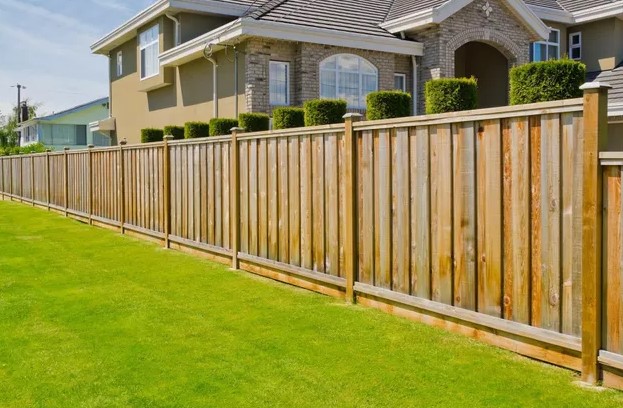
A sturdy and well-maintained fence is an essential element of any property, providing both security and privacy. Over time, fences can experience wear and tear due to weather conditions, age, or even accidents. Whether you have a wooden, vinyl, or chain-link fence, regular maintenance and timely repairs are crucial for ensuring your fence continues to serve its purpose. In this article, we will provide practical and effective fence repair tips to help you secure your property and extend the lifespan of your fence.
By understanding common fence issues and applying the right repair strategies, you can maintain a safe and attractive perimeter around your home or business.
1. Common Fence Problems and How to Address Them
Fences face various challenges that can compromise their structural integrity. Identifying these issues early on can help prevent more extensive damage. Below are some common problems homeowners encounter with their fences and tips for repairing them:
A. Broken or Rotting Fence Posts
The fence posts are the backbone of your fence, and if they begin to weaken or rot, the entire structure can become unstable. Wooden fence posts are particularly susceptible to rot, especially if they are in direct contact with the ground or exposed to excessive moisture.
Repair Tip: Inspect the posts regularly for signs of decay or breakage. If a post is rotting or broken, it’s best to replace it. To replace a fence post, dig a hole around the damaged post, remove the old one, and install a new post in concrete to ensure stability. If the post is only slightly weakened, you can secure it with additional bracing until you can replace it.
B. Loose or Damaged Panels
Fence panels can become loose or damaged due to wind, storms, or normal wear and tear. This issue is more common in wooden fences, but vinyl and metal fences can also suffer from panel damage.
Repair Tip: To repair a loose panel, tighten the screws or nails holding it in place. If a panel is cracked or warped, you may need to replace it entirely. For wooden fences, use wood glue or screws to reinforce weak joints, and consider treating the wood with a weather-resistant sealant to prevent future damage.
C. Leaning or Sagging Fence
Over time, your fence may begin to lean or sag, especially if the posts are not properly secured or the ground has shifted. This is often a result of improper installation or weather-related erosion.
Repair Tip: To fix a leaning fence, you will need to re-anchor the posts. This can be done by digging up the post, resetting it in a more stable position, and securing it with concrete. If the fence has sagged, you can add support braces to the posts or install additional posts to prevent further leaning. For wooden fences, replacing damaged boards or using tension wires may also help.
D. Rusty or Corroded Metal Fences
For homeowners with chain-link or metal fences, rust and corrosion can be a significant problem, especially in areas with high humidity or salty air. Rust not only affects the appearance of the fence but can also weaken its structure over time.
Repair Tip: To repair a rusty fence, start by cleaning the affected area with a wire brush to remove loose rust. After cleaning, apply a rust-inhibiting primer followed by a coat of paint to prevent further corrosion. If the metal has extensive rust damage, you may need to replace certain sections or install a new fence altogether.
2. Essential Tools and Materials for Fence Repairs
Before diving into your fence repair project, it’s important to gather the necessary tools and materials. Having everything on hand will make the job more efficient and ensure that the repairs are done correctly. Here’s a list of the basic tools you’ll need for common fence repairs:
- Post Hole Digger or Shovel: Essential for digging holes for new fence posts or adjusting existing ones.
- Hammer or Drill: Used to drive nails or screws into fence panels and posts.
- Level: Ensures that posts and panels are installed straight and securely.
- Concrete: Required for setting fence posts and securing them in place.
- Wood Glue or Wood Screws: Useful for repairing wooden panels and reinforcing joints.
- Wire Brush or Sandpaper: Used to clean rust off metal fences.
- Rust-Resistant Paint or Primer: Important for treating and protecting metal fences from future corrosion.
- Replacement Fence Panels or Posts: In case you need to replace damaged sections of your fence.
Having the right tools and materials ensures that your fence repairs are done efficiently and securely, helping to maintain your property’s safety and appearance.
3. Preventative Measures to Extend the Life of Your Fence
Once your fence repairs are complete, it’s important to take steps to prevent future damage and keep your fence in top condition. Implementing these preventative measures will help extend the life of your fence and reduce the need for frequent repairs.
A. Regular Inspections
Perform regular inspections of your fence to identify potential issues before they become major problems. Check for signs of rot, rust, loose panels, or damage caused by weather or pests. Early detection allows you to make minor repairs before they escalate into more costly fixes.
B. Apply Weather-Resistant Treatments
For wooden fences, applying a weather-resistant sealant or stain every few years can help protect the wood from moisture, UV rays, and pests. For metal fences, using a rust inhibitor and repainting the surface periodically will prevent corrosion.
C. Keep Vegetation in Check
Overgrown vines, bushes, or tree branches can cause damage to your fence, particularly if they press against the surface or interfere with the posts. Regularly trim any plants near your fence to prevent them from causing damage.
D. Address Drainage Issues
Poor drainage around your fence can lead to water accumulation and soil erosion, which can weaken the posts and cause sagging. Ensure that the ground around your fence is properly graded and that water flows away from the structure. You may need to install a drainage system to protect your fence from long-term water damage.
By following these fence repair tips, you can ensure that your property remains secure, private, and well-protected for years to come. Whether you’re dealing with broken posts, damaged panels, or rusty metal fences, taking the time to address these issues promptly can help you maintain the integrity of your fence and the safety of your home. Incorporating preventative measures and regularly inspecting your fence will further enhance its longevity and reduce the likelihood of needing extensive repairs. Remember, fence repair tips are essential not only for the aesthetic appeal of your property but also for maintaining a secure perimeter that protects your family and belongings.
